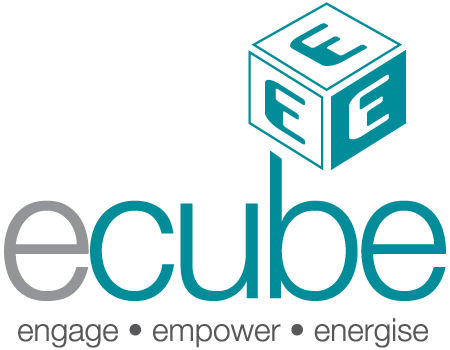In today’s business environment, as well as in academia, the use of technology such as PowerPoint slides or more recently, Prezi is not only commonplace but also essential. However, the PowerPoint slides are not the end… they are a means to an end. They are a tool in our massive toolkit of communication skills to convey a message that is concise, clear and effective.
You may be making a presentation to:
- Inform
- Instruct
- Entertain
- Inspire/Motivate
- Activate/Stimulate
- Know your Audience: For any form of communication to be effective, its vital you understand who your audience is, and speak with empathy. The better you know your audience, the more you can tailor your message to inspire, motivate and persuade them. Go beyond superficial qualities such as age, gender, etc and seek to gain deeper insights You can ask yourself questions like:
- What motivates them?
- Why are they here?
- What are their greatest worries?
- How can I solve their problems?
- What do I want them to do?
- How can I best reach them?
- Establish a Common Ground: Being able to connect with your audience (pathos) can make all the difference in the way your presentation resonates with them. How would you like them to feel?
Try to think about lateral reference points to the kind of cognitive or emotional response you would like to elicit from them. Think about the best presentation you sat through that was mind-blowing. What about it resonated with you? Think about the last conversation you had with a friend that made you more relaxed and receptive.
Try to relate these experiences with your audience. Some commonalities to consider would be:- Shared experiences
- Common goals
- Aligned beliefs
- Define your “BIG IDEA”: So, now that you have established how you would connect with your audience, the next step would be to ensure your main message is communicated. So what is your “big idea”? It’s the crux of your presentation. It is your clear view or opinion of the subject and what’s at stake if your audience does not agree with you. Your big idea should be a complete and concise sentence that includes tow components:
- Your point of view
- What’s at stake (why should the audience care about it)
- Define the Audience’s Journey: During your presentation, are you asking your audience to change their behavior in any way? The more clearly you define what you want, the more likely your audience is to accept it, and the more clearly you define the next steps, the easier it would be for them to visualize getting there.
Before you begin your presentation, map your desired audience transformation:- From (their current position)
- To (what you would like them to believe and how you want them to act going forward)
- Generate content to support the BIG IDEA: When you are planning your presentation, it is very tempting to build your slides first and use them as an outline for your talk. However, if you could step back, and build your content, you would have much better clarity and possibly generate new content. The way to do this is to research existing content and then brainstorm on your ideas, around your BIG idea.
Keep it creative, use mind maps, draw, use arrows, flowcharts, what ever works for you – just get your right brain thinking.
- Anticipate Resistance: Asking an audience to change their behavior or beliefs in order to adopt your Big idea is a big deal and some listeners are bound to object to your opinion. Think about how your audience may resist your idea and be ready to overcome potential arguments. Consider how they might demonstrate the following:
- Logical Resistance: an audience member might resist your argument by reasoning through why the budget doesn’t work. He or she might not buy your idea if they perceive holes in your argument structure or the way you made your case
- Emotional Resistance: some audience members might object to your argument on the basis of a specific emotional response (such as fear, anger, or guilt) or an ingrained aspect of their personality (such as the desire to follow the majority)
- Practical Resistance: Barriers such as money, time and geography can all limit an audience member’s ability to make the changes that you are calling for.
- Amplify your message by contrasting: You can make your presentation more interesting by highlighting the difference between two concepts. This creates suspense and provides the context for your idea. Some types of contrast that you could use are:
- Past vs. future
- Speed vs. endurance
- Sacrifice vs. reward
- Strategy vs. action
- Create a solid story structure: As we were all told when we started writing in school, all compelling stories and presentations have a clear beginning, middle and end. This is also a structure we can find in most successful movies, stories and speeches in history.
- Beginning: this is the “what is” (an assessment of the current state) compared to the “what could be” (showing the audience this rosy picture of a possible future state). Using visualization or setting a huge challenge could be an in interesting way to draw attention.
- Middle: shift between what is and what could be using appropriate content to show your audience why your Big Idea is more desirable than the status quo and move the audience toward your vision of “what could be”
- End: clearly state a call to action, emphasizing how bringt your audience’s future will be if the heed it.
- Add Emotional Texture and Humor: A good story elicits visceral responses: we may shed a tear, get Goosebumps, roll down with laughter and applause. Unfortunately, we don’t often see this in presentations. Think about how you can infuse humor into you presentation, how you can connect with your audience at an emotional level and make your message more memorable.
To forge an emotional connection with your audience, incorporate STAR moments (Something They’ll Always Remember) into your presentation. This could include:- Shocking statistics
- Evocative visuals
- Funny anecdotes and visuals
- Repeatable sound bitesTry to use these STAR moments at points in you presentation when you want the audience to remember what you said and chat about it later on.
- Practice, Practice, Practice: Having practiced in advance will help you feel confident about your presentation. When you know your material well, you are able to relax and focus on the message and not the slides – it allows you to connect with the audience. Try to prepare well in advance:
- Seek honest feedback and inputs from a trusted colleague or subject matter expert
- Have a shorter plan B in case of unforeseen circumstances
- Play around with the order of the slides to make sure the flow is seamless
- Practice using the slideshow so you know how it flows and practice at least once without your speaker notes
- Videotape yourself Finally, remember; NEVER deliver a presentation you wouldn’t want to sit through!


